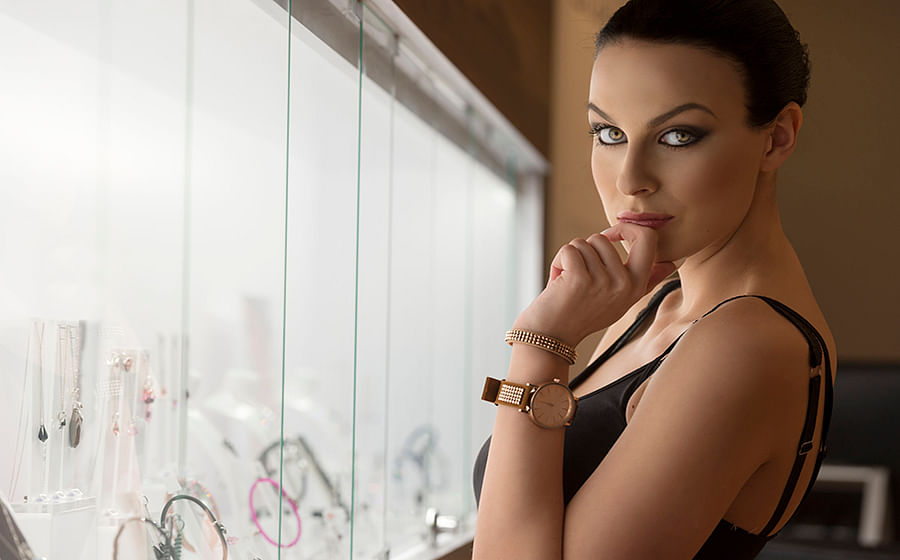
Photo: 123rf
The boys give us girls a lot of flack for our endless debates on the finer points between sugaring and strip waxing, or where to get the best facial treatments in town; but have you ever been around a group of men discussing watches? If their rapid fire discussions peppered with words like “chronograph”, “bezel” and “tourbillon” have ever made you feel like a guy amongst a group of women discussing oxygen vs LED facials, then let this guide help you become a timepiece expert in under 5 minutes.
Case
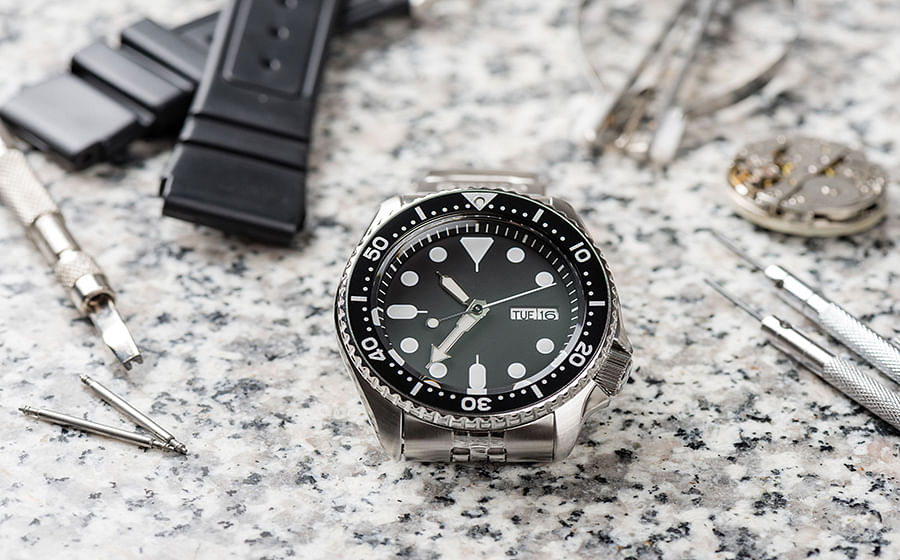
The container that protects and contains the watch
Photo: 123rf
Round: most cases take on a rounded shape, and is the most efficient design for analogue dial watches
Square: a square case is much harder to manufacture, and they offer a sporty, chunky-chic style.
Tonneau: imagine rectangle with curved sides. A tonneau case is an elegant design typically used in dress watches in order to curve them discreetly to the wrist.
Cushion: this roundish-square design defines the transition from pocket to wristwatches, when wire lugs were soldered to cushion-like cases so they could be worn on the wrist.
ALSO READ: EVERYTHING YOU NEED TO KNOW ABOUT WATCH STRAPS
Bezel
A ring around the crystal on the top portion of a watch that holds the glass or crystal in place
Fixed: a fixed bezel frames the crystal and is typically just purely decorative, but can on occasion be functional in the case of a tachymeter (used to measure speed).
Unidirectional: mostly found on diving watches, unidirectional bezels have a 60-minute scale so divers can time their air usage. The bezel will only turn in 1 direction so divers do not mistakenly extend their dive.
Bidirectional: for non-diving watches with an adjustable bezel, this style is preferred. GMT bezels spin both ways so you can change your time zone settings quickly.
Internal: some watches feature an internal bezel to protect it from damage, and can usually be locked in place.
Pushers
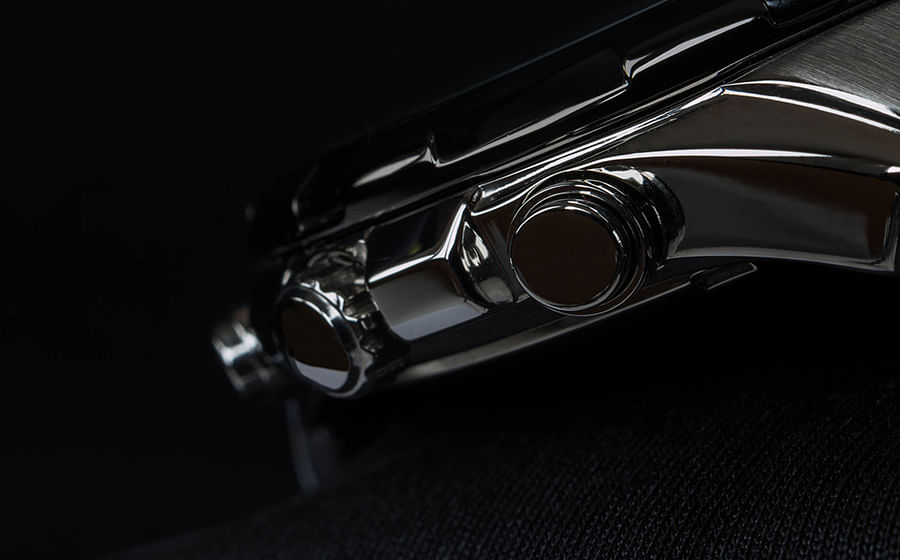
Button(s) located outside the case that control different functions of the watch. These are most commonly found on watches with a chronograph (a timer).
Photo: 123rf
Mushroom: the most common type of pusher, you simply push these button(s) down to activate specific features. They have no obstructions.
Screw down: these pushers are designed to prevent water from entering by compressing the seal. In order to activate, they must be unscrewed before operation.
Mono: typically found in vintage or vintage-inspired chronographs, mono pushers were commonplace before the start/stop and reset pushers were separated. A mono pusher does all 3 tasks, and is quite an unusual today.
Hidden: for watches that have many functions and require many corresponding pushers, hidden pushers are set flush with the case to keep the design simpler.
Crown
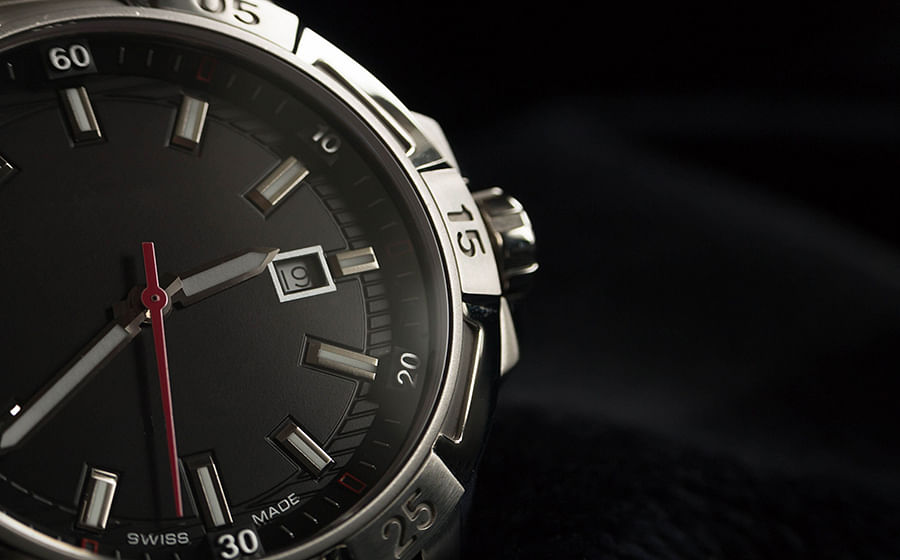
A button on the watch case used to set the time and calendar. On mechanical watches, it is also used to wind the mainspring.
Photo: 123rf
Screw down: this crown requires unscrewing before it can be used. It is a protective function that compresses a seal for increased water resistance.
Compressor: similar to a screw down crown, a compressor crown compresses a seal for increase water resistance. Unlike the screw down, it requires only 1 turn to active.
Lever: a lever is set on the case to compress the seal, pushing the crown down tight when the level is folded in the closed position.
Canteen: for increased protection of the crown, canteen crown features a screw down cover to prevent it from being knocked about or damaged. This is typically found on watches intended for rugged circumstances.
Crystal
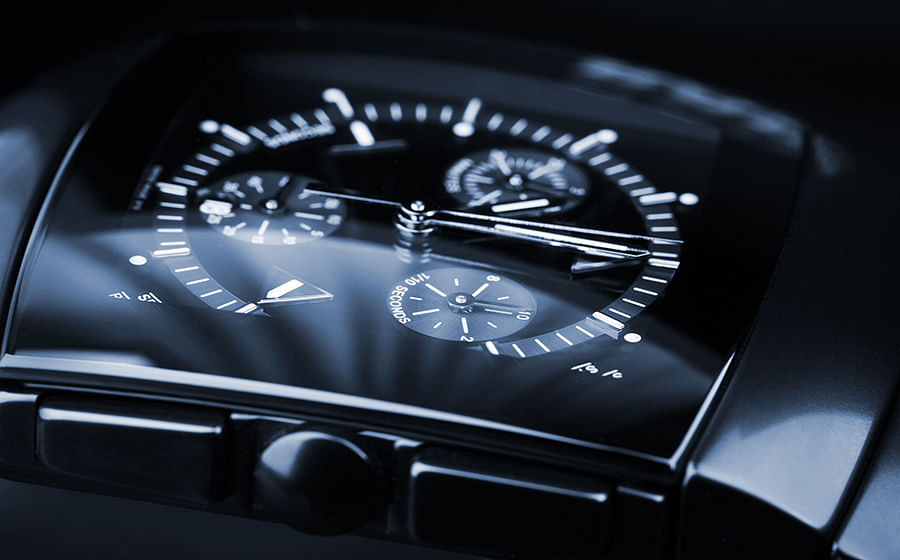
The transparent cover that protects the watch dial and reduces glare. Can be made from glass, plastic or synthetic Sapphire.
Photo: 123rf
Sapphire: most modern watches use lab-grown synthetic sapphire (aka corundum) as it is highly scratch-resistant.
Acrylic: before sapphire crystals were made possible, acrylic was commonly used by manufacturers. In order to meet strength requirements, crystals made of acrylic typically featured thick, domed tops.
Magnifying window: some displays on the face of a watch are often hard to read due to the limitations in its radius. In these cases, a magnifying window is positioned over the display.
Exhibition caseback: found on watches that display the mechanical movement, exhibition casebacks are typically made of sapphire and reveals the entire interior of the watch, while maintaining protection.
Dial
A plate with a metal base visible through the crystal that carries indicators such as the hours, minutes and seconds.
Sandwich: this type of dial features a luminous layer under a stencil cut layer to increase legibility, hence its name.
Sunburst: features a radial grain from the center of the dial that spreads outwards, lending it a sunburst effect.
Tappisserie: also known as a ‘waffle’ dial, this design features a tapestry of raised squares that have been directly engraved into the metal.
Skeleton: this design showcases the intricacy of a watch’s movement by having part of the dial cut away to reveal the works underneath.
Markers
This depicts the various styles the numbers on a dial are represented
Roman: a letter-based numerical system (roman numerals) that were developed by the Romans. It is famous for not having a representation of zero.
Baton: simple shapes like rectangles and circles replace traditional numbers and are favoured for their clarity and simple aesthetics. Many dive watches use batons as there is more surface area to apply luminous paints.
Arabic: the fall of the Roman Empire allowed a rise in the popularity of the Arabic numerical system, which introduced the zero. On a watch, this is your standard 1-12 numbering.
California: a mix of Roman and Arabic numerals, this style was developed so as to allow for accurate and easy readings even in the most extreme of conditions.
Movement
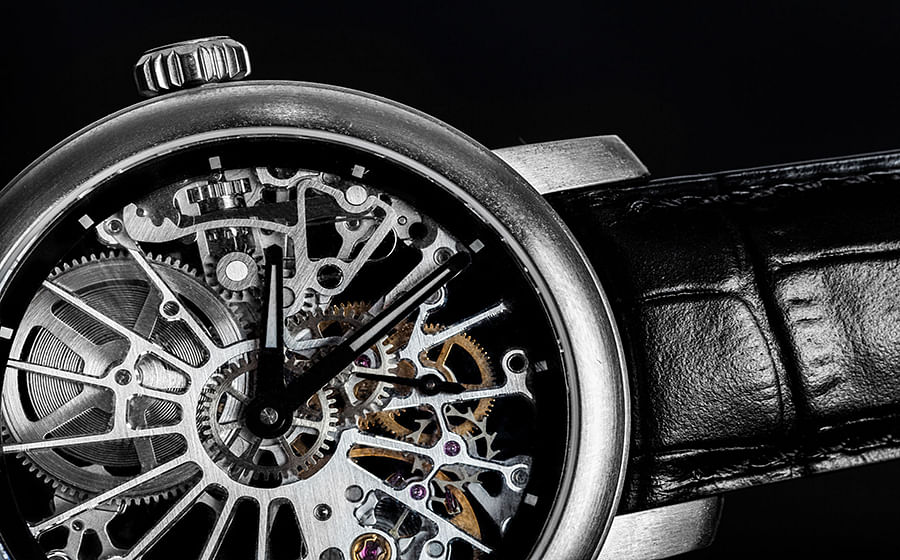
The movement acts as the engine for a watch; an inner mechanism that keeps time and powers the watch’s functions
Photo: 123rf
Manual: a manual movement is mechanical and powered by a tightly coiled mainspring. Watches with manual movements require the wearer to hand wind it every other day in order to keep it powered.
Automatic: similar to a manual movement, an automatic is also mechanical. In addition to being hand wound, it can also be wound by the free movement of a rotor weight (a small weight inside the watch that moves as your wrist moves throughout the day).
Quartz: this movement is battery powered and is the most accurate of the lot.
Skeleton: movements are assembled from a few layered plates which often results in certain moving parts being obscured. A skeleton movement is one that has been reworked such that all these parts are revealed.
Complications
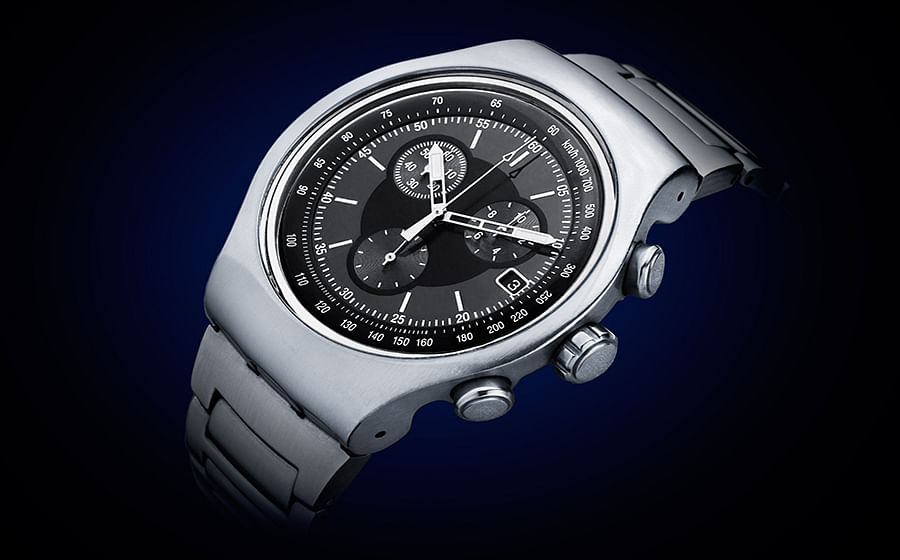
Any additional functions on a watch’s dial that goes beyond timekeeping.
Photo: 123rf
Chronograph: activated by a pusher, a chronograph is a timing function that operates independently of the watch’s main timekeeping function.
Power Reserve: this indicates how much power there is left in the mainspring of manual or automatic watches.
Moonphase: this represents the different phases of the moon. A complete lunation takes 29 days, 12 hours, 44 minutes and 2.8 seconds and is divided in 4 phases: new moon, first quarter, full moon and last quarter.
Date: the date display typically revolves 1-31 without correction for shorter months.
Tourbillon: French for the word ‘whirlwind’, this complication is a feature that helps reduce the effect of gravity on the balance by rotating the entire escapement (a device that transfers energy to the timekeeping element) once every 60 seconds.
Perpetual calendar: unlike a standard date display that does not account for shorter months, a perpetual calendar automatically keeps track of days, months, years and sometimes, leap years.
Minute Repeater: a complication that was originally intended for use in darker winter months. The minute repeater chimes the time on command through a series of gongs by activating the pusher, allowing one to tell the time even in complete darkness. This is one of the most difficult complications to achieve, and is an indicator of fine watchmaking.
Equation of Time: a complication that is useful for astronomers, the equation of time is the difference between true solar time and mean time. Solar time, as indicated by sundials, varies from day to day because of the Earth’s elliptical orbit, and the longitude at the point of observation. Most watches run on mean time, which ignores these variations.
Grand Strike: this complication automatically sounds the hours and quarter-hours during a 24-hour period.
Dead-beat second: a unique feature found on most contemporary wristwatches that provides a more accurate read-off of time. This comes from the fact that the second hand remains motionless (or dead) for as long as the second has not passed, which means the hand only indicates the second once it has actually passed.
Hands
Indicators that tell the hour, minute and second.
Baton: typical of dress watches, baton hands are slender and elegant and often made with precious metals.
Broad arrow: part of the original design for Omega’s Speedmaster, these hands are clear and easy to read, with the hour hand featuring a large arrow and the minute hand that ends in a long pointed taper.
Breguet: these distinct hands are used mostly by top-tier watch brands and are made by traditional methods that are hard to manufacture. The hands are very slim and feature a loop set toward the end of the hand.
Cathedral: imposing and classic, cathedral hands look like those on clocks of actual cathedrals. The style originates from the days of unprotected clock dials.
Sword: a signature style of hands of Omega watches, these hands look like miniature swords set on the dial. This design is typical of dive watches as the hour and minute hand are distinctly different, making them easy to read underwater.
Dauphine: shaped like elongated diamonds with a sharp tip, this style of hands is somewhere in between baton and broad arrow hands. It is a timeless style that makes for easy reading.
Feuille: the word for ‘leaf’ in French, this style of hands are very sophisticated and feature curves that taper to a sharp edge. Like Breguet hands, these are very hard to manufacture.
Mercedes: developed for Rolex’s Submariner, this style features 2 very distinct hands so as to easily differentiate the hours and minutes. The hour hand has a large bulb near the tip while the minute hand resembles a sword.
ALSO READ: PANDORA’S SHINE COLLECTION IS PERFECT FOR THE EVERY DAY MODERN WOMAN

